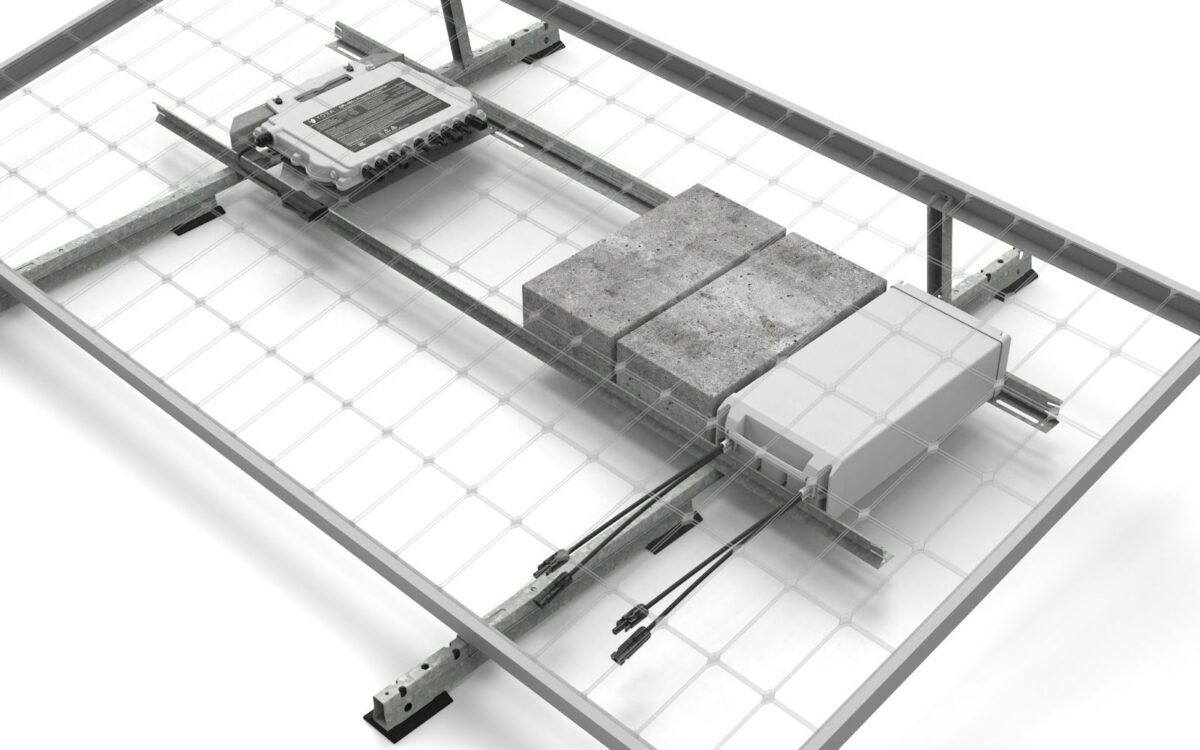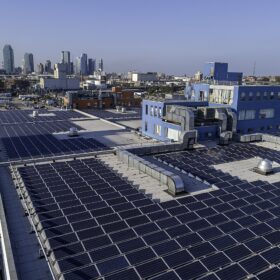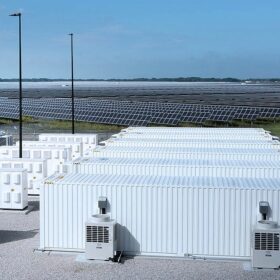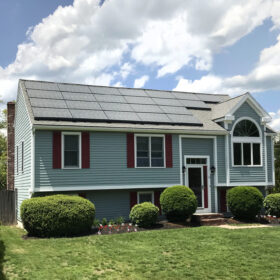Energy storage company Yotta Energy unveiled the Yotta Block, the next evolution of the company’s SolarLEAF battery. Designed to replace a standard ballast block in a solar array, the Yotta Block provides one kilowatt of battery storage while eliminating the need for separate storage space.
“One of the challenges our founders faced was where to put the batteries,” said Yotta CEO Jordan Harris in an interview with pv magazine USA. “Where you want to put them doesn’t always overlap with where you’re able to put them; that becomes a significant challenge that adds costs and complexity.”
He explained that the desire to co-locate batteries and rooftop solar drove the company to start developing the Yotta Block, which has the same dimensions and heftiness as a normal ballast block. By swapping in the Yotta Block, Harris said, the space that’s already being filled is made more useful by adding energy storage capabilities.
And they’re universally compatible with all major racking models.
“The marginal cost or time of installing that battery relative to a ballast block is effectively zero,” Harris said, as it’s not taking up additional space or adding weight.
Companies can purchase the lithium iron phosphate blocks directly from Yotta or through distribution partners like Greentech Renewables. Harris encourages C&I developers to look beyond hardware costs to consider the total value proposition, including installation savings and operational benefits.
“Hardware is only one part of the project, but soft costs in the small and medium C&I market can be considerable,” he said, adding that they can make up 30% to 40% of a project’s costs. “When you standardize around a solution that deploys everything on the roof, your soft costs are reduced or eliminated.”
That way, projects have standardized equipment and installation processes; and, no other infrastructure upgrades are needed to install Yotta Blocks. That plug-and-play capability, coupled with their size and part count reductions, makes them competitive with other storage solutions.
This is particularly true for large companies looking to deploy solar and storage. If a business has hundreds or thousands of buildings under their management, it’s not feasible for them to make a project-by-project tech decision, Harris explained.
“In those situations, companies want to make a single tech decision that standardizes everything as much as possible and deploy it across their entire footprint,” he said, noting that a project doing just that for an American dollar store corporation is in the works at Yotta.
“If they ever want to deploy [solar and storage] across their entire footprint, they need to make a hardware decision and go,” Harris added. “Our solution enables that.”
Though the layout of one solar array may differ to another, the basic components will be the same.
“The installation team and operations and maintenance teams already know how to handle ballast blocks and have a standardized process for how to install them,” Harris said. “Our batteries slot right in; it greatly streamlines everything, which leads to cost savings and better economics.”
This article was amended to remove pricing information.
This content is protected by copyright and may not be reused. If you want to cooperate with us and would like to reuse some of our content, please contact: editors@pv-magazine.com.









By submitting this form you agree to pv magazine using your data for the purposes of publishing your comment.
Your personal data will only be disclosed or otherwise transmitted to third parties for the purposes of spam filtering or if this is necessary for technical maintenance of the website. Any other transfer to third parties will not take place unless this is justified on the basis of applicable data protection regulations or if pv magazine is legally obliged to do so.
You may revoke this consent at any time with effect for the future, in which case your personal data will be deleted immediately. Otherwise, your data will be deleted if pv magazine has processed your request or the purpose of data storage is fulfilled.
Further information on data privacy can be found in our Data Protection Policy.